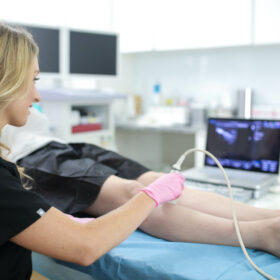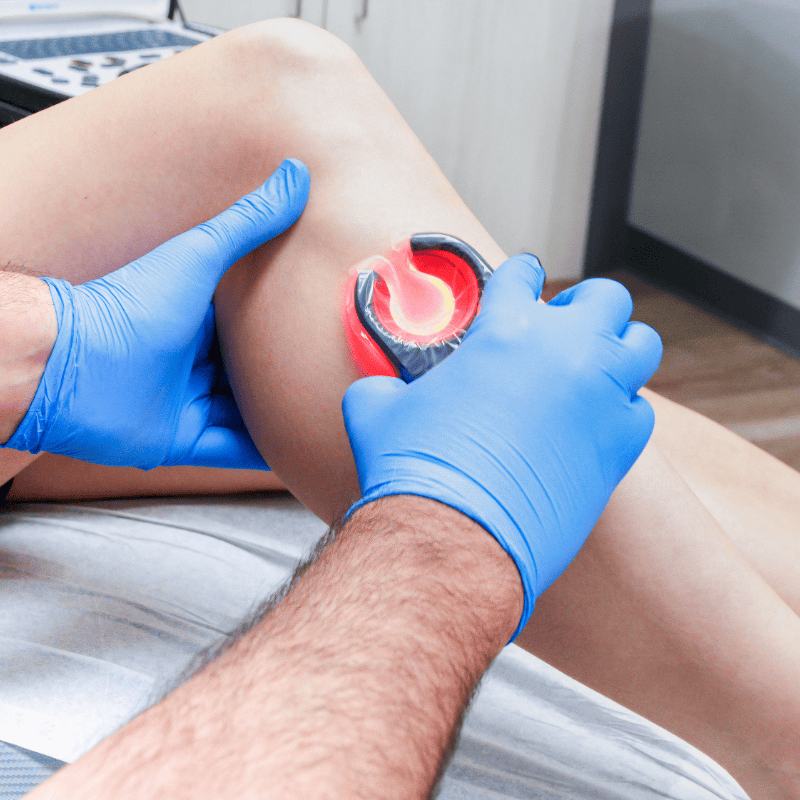If you’re considering sclerotherapy as a treatment option for spider veins or varicose veins, you may have concerns about whether the procedure can make your legs worse. Sclerotherapy is a popular and effective minimally invasive treatment for these vein conditions, but like any medical procedure, it’s important to understand the potential risks and side effects. We delve into the details of sclerotherapy and address the question: can sclerotherapy make legs worse?
What is Sclerotherapy?
Sclerotherapy is a highly effective and minimally invasive treatment for spider veins and small varicose veins. During the procedure, a sclerosing agent is injected directly into the affected veins. This agent irritates the vein lining, leading to its collapse and gradual disappearance. As time passes, the body absorbs the treated veins, resulting in a smoother and more aesthetically pleasing appearance of the legs. Sclerotherapy offers long-lasting results and is a popular choice for individuals seeking to improve the appearance of their legs.
Sclerotherapy is primarily used to treat spider veins and small varicose veins. It is not typically recommended for larger varicose veins, as other procedures like endovenous laser ablation or radiofrequency ablation may be more appropriate. At Vein Treatment Clinic, we specialize in minimally invasive vein treatments, including sclerotherapy, to ensure the best possible outcomes for our patients.
Factors Affecting Sclerotherapy Results
The success of sclerotherapy depends on several factors, including the size and type of veins being treated, the injection technique, the choice of sclerosing agent, and the individual’s response to treatment. It’s important to note that while sclerotherapy is highly effective for most patients, results can vary.
- Size and Type of Veins: The size and type of veins being treated play a significant role in the success of sclerotherapy. Smaller veins, such as spider veins, generally respond well to treatment, while larger varicose veins may require alternative procedures for optimal results.
- Injection Technique: The expertise and precision of the vein doctor administering the injections are crucial. Proper injection technique ensures the accurate delivery of the sclerosing agent into the targeted veins, maximizing the effectiveness of the treatment.
- Choice of Sclerosing Agent: The selection of the sclerosing agent is an important consideration. Different agents may be chosen based on the specific needs and characteristics of the veins being treated. The choice of the sclerosing agent can influence the outcome and success of the procedure.
- Individual’s Response to Treatment: Each individual may respond differently to sclerotherapy. Factors such as the body’s natural healing process, circulation, and overall health can impact the response to treatment. While sclerotherapy is generally effective for most patients, individual variations can result in varying degrees of success.
Injection Site Reactions
After sclerotherapy, it’s common to experience some temporary side effects at the injection site. These may include bruising, redness, swelling, or discomfort. These reactions are typically mild and resolve on their own within a few days or weeks. In rare cases, patients may experience more severe side effects such as ulceration or allergic reactions, but these are extremely uncommon when the procedure is performed by a skilled and experienced vein specialist.
Appearance of Treated Veins
In the immediate aftermath of sclerotherapy, you may notice that the treated veins appear darker or more prominent. This is a normal part of the healing process and is known as the “maturation phase.” Over time, the treated veins will gradually fade and disappear completely, resulting in clearer and smoother skin. However, it’s important to remember that the treated veins may take several weeks or even months to fully resolve. Patience is key when it comes to seeing the final results of sclerotherapy.
Number of Treatments
The number of sclerotherapy treatments required for optimal results can vary depending on the extent of the vein condition and individual factors. Some patients may achieve their desired outcome with just one session, while others may require multiple treatments spaced several weeks apart. At Vein Treatment Clinic, we always conduct a thorough evaluation and personalized treatment plan for each patient, ensuring the best chances of success.
Potential Complications
While sclerotherapy is generally safe and well-tolerated, like any medical procedure, it carries some risks. In rare cases, complications such as blood clots, allergic reactions, skin discoloration, or brown staining may occur. However, these risks are minimized when the procedure is performed by a board-certified vein doctor in a reputable vein clinic. At Vein Treatment Clinic, our vein specialists are highly trained and experienced in performing sclerotherapy, ensuring the highest standards of safety and efficacy.
Post-Treatment Care
To optimize the results of sclerotherapy and minimize potential side effects, it’s important to follow the post-treatment care instructions provided by your vein doctor. These may include wearing compression stockings, avoiding prolonged sitting or standing, engaging in regular exercise, and avoiding direct sun exposure. Following these guidelines will help promote proper healing and enhance the long-term outcomes of your sclerotherapy treatment.
Schedule Your Sclerotherapy Appointment
Sclerotherapy is a highly effective and minimally invasive treatment for spider veins and small varicose veins. While it is generally safe and well-tolerated, it’s important to understand that individual experiences and outcomes can vary. The appearance of treated veins may initially worsen before improving, but with time and patience, the veins will fade and disappear completely, resulting in clearer and smoother legs.
By choosing Vein Treatment Clinic, a reputable network of vein clinics led by board-certified vein doctors, you can have confidence that your sclerotherapy procedure will be performed with the highest level of expertise and care. We have state-of-the-art locations across the United States, including New York, New Jersey, Long Island, California, and Washington DC. Contact us today to schedule a consultation and receive a personalized treatment plan tailored to your needs. We provide hassle-free insurance verification to ensure a seamless and hassle-free experience.











